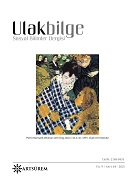Ambalaj Tasarımında Minimalizm
Minimalism in Packaging Design
Author(s): Merve ErsanSubject(s): Visual Arts, Semiology, Aesthetics, Post-War period (1950 - 1989), Marketing / Advertising, ICT Information and Communications Technologies
Published by: Sanat ve Dil Araştırmaları Enstitüsü
Keywords: Minimalism; packaging design; graphic design; sustainability;
Summary/Abstract: Minimalism developed in the late 1950s as a reaction to the decorative art of abstract expressionism. Advocates of this movement in art and design emphasized purity, clarity and simplicity. Minimalism first showed its influence in the field of graphic design during the international typographic style era that emerged in Switzerland. In minimalist graphic design, sans serif typefaces, limited use of colors, dense negative areas and geometric shapes stand out. Minimalist designers aim to create objective and non-interpretive designs by eliminating all aspects of illusion and visual illusion and discarding the details that are not required to be used in the design. In this study, the use of the minimalist approach in packaging design was examined. In the field of packaging design, minimalism creates a contrasting approach with the dynamic visual language that consists of bright packaging materials, saturated colors, various fonts and three-dimensional typography that try to attract the attention of the consumer. In contrast to this traditional trend that is dominant today, minimalism strikes a balance between environmental considerations and the aesthetics of simplicity. In the examples examined in the research, it is seen that, minimalist packaging design products tries to create a sense of functionality, quality and in the consumer, as well as referring to ecology and sustainability issues.
Journal: Ulakbilge Sosyal Bilimler Dergisi
- Issue Year: 9/2021
- Issue No: 64
- Page Range: 1193-1202
- Page Count: 10
- Language: Turkish

